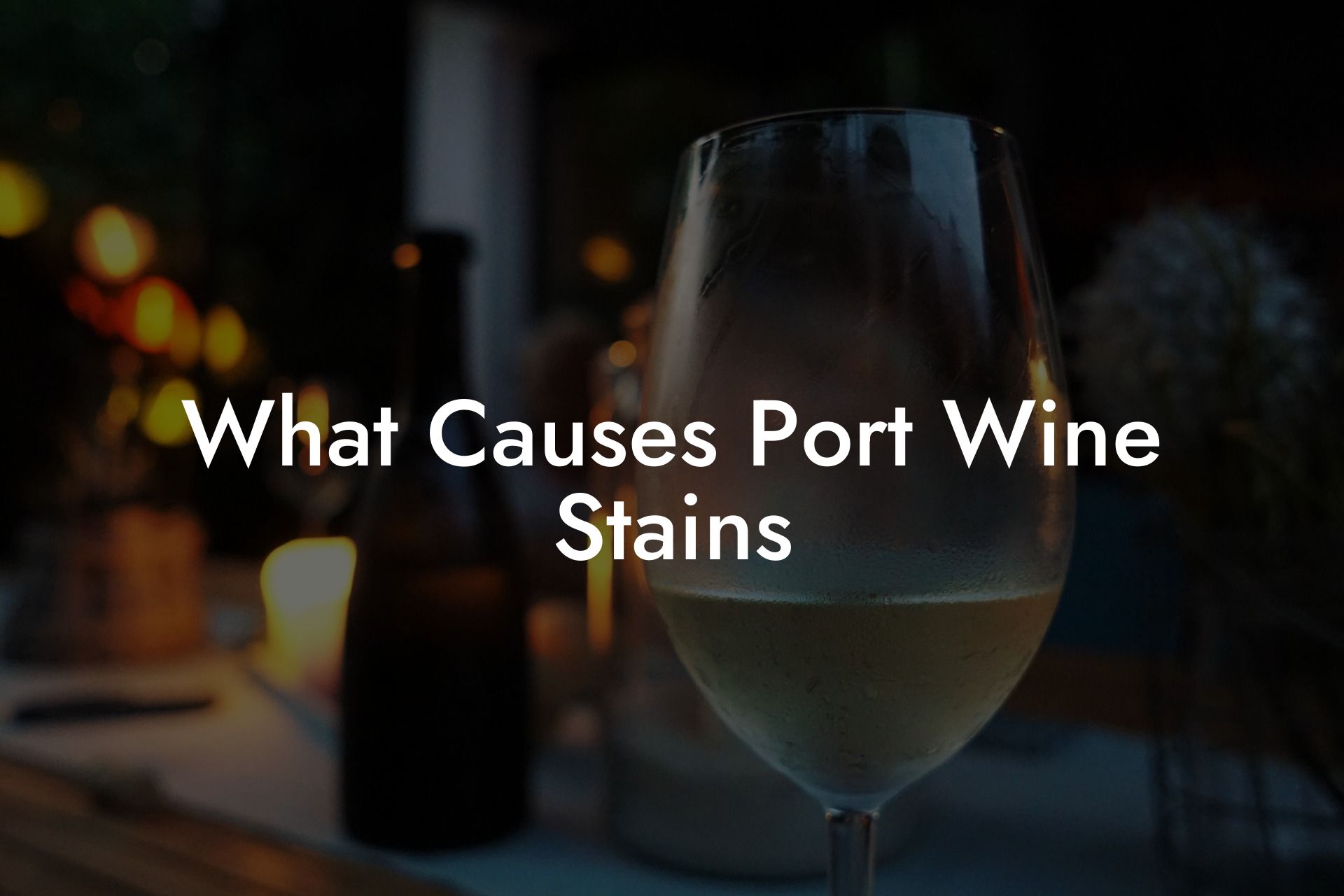Port wine stains, those mysterious reddish-purple marks on the skin, have baffled many for years. But fear not, wine enthusiasts and curious minds! Black Wine Club is here to unveil the secrets behind these fascinating birthmarks and explore the world of wine along the way. Get ready to dive into an engaging discussion on what causes port wine stains, so you can impress your friends at your next wine tasting or electronic music event. Let's start unraveling the mystery together.
What Causes Port Wine Stains Table of Contents
Understanding Port Wine Stains
A port wine stain (PWS) is a type of vascular birthmark caused by an abnormal development of blood vessels in the skin. They are named for their reddish-purple hue, which resembles the color of port wine. Port wine stains may occur anywhere on the body, but they are most commonly found on the face, neck, and limbs.
The Root Cause: Capillary Malformations
The exact cause of port wine stains is still under investigation, but researchers believe the primary factor is a capillary malformation in the affected area of skin. Capillaries, the tiny blood vessels responsible for delivering oxygen and nutrients to the tissues, are supposed to constrict and dilate according to the body's needs. In the case of port wine stains, however, these capillaries are malformed and permanently dilated, leading to the characteristic discoloration of the skin.
Do You Want to Win a Free Bottle of Wine?
Don't miss out on the opportunity to win a free bottle of wine every week.
Enter our weekly prize draw today!
Contributing Factors: Gene Mutations
Recent studies have discovered gene mutations in some people with port wine stains, specifically in the GNAQ and GNA11 genes. These genes play a significant role in the proper functioning of blood vessels, so mutations may be responsible for the formation of the abnormal capillaries. Although genetic factors may contribute to the development of port wine stains, they are not considered hereditary, meaning parents with PWS don't necessarily pass the condition on to their children.
Progression and Possible Complications
Port wine stains are generally harmless, but they may change in appearance over time. As an individual with a PWS ages, the affected skin may become thicker, darker, and more textured. In some cases, PWS can be associated with other conditions, such as Sturge-Weber syndrome or Klippel-Trenaunay syndrome, which involve additional complications ranging from neurological issues to limb abnormalities.
Treatment Options for Port Wine Stains
While port wine stains are generally not a medical concern, they can be psychologically and emotionally distressing for those affected, and many people seek treatment to improve the appearance of their skin. Here are a few of the most common treatment options:
- Laser Therapy: One of the most popular treatments for port wine stains is laser therapy, specifically using a pulsed dye laser. This procedure targets the blood vessels, using heat to break them down and reduce the visibility of the birthmark. Multiple sessions are typically required for best results.
- Makeup: Some individuals prefer to use makeup to conceal their port wine stain, particularly for cases involving smaller or less prominent birthmarks. There are specialized concealers and foundations available for covering up vascular birthmarks, offering temporary and unobtrusive coverage.
- Other Treatments: In some cases, alternative treatments may be recommended, such as cryotherapy, surgical removal, or even radiation therapy. These options are generally reserved for cases where the port wine stain is causing significant health concerns or psychological distress.
What Causes Port Wine Stains Example:
Imagine attending a wine tasting event with friends and noticing someone with a port wine stain on their face. Thanks to your new knowledge on the topic, you are now well-equipped to engage in a thoughtful and informed conversation about the root cause of these birthmarks, potential treatments, and the fascinating connection to the world of wine. Your friends will be amazed by your expertise and ability to share such intriguing information with confidence and poise.
Now that you're well-versed in the curious world of port wine stains, we hope you'll continue to explore the many fascinating aspects of wine with us here at Black Wine Club. Don't forget to share this article with your fellow wine enthusiasts, and be sure to check out our other informative guides and resources to further expand your wine knowledge. Cheers to continuing the journey together, one intriguing topic at a time!
Do You Want to Win a Free Bottle of Wine?
Don't miss out on the opportunity to win a free bottle of wine every week.
Enter our weekly prize draw today!












